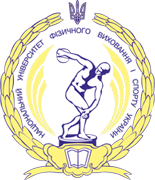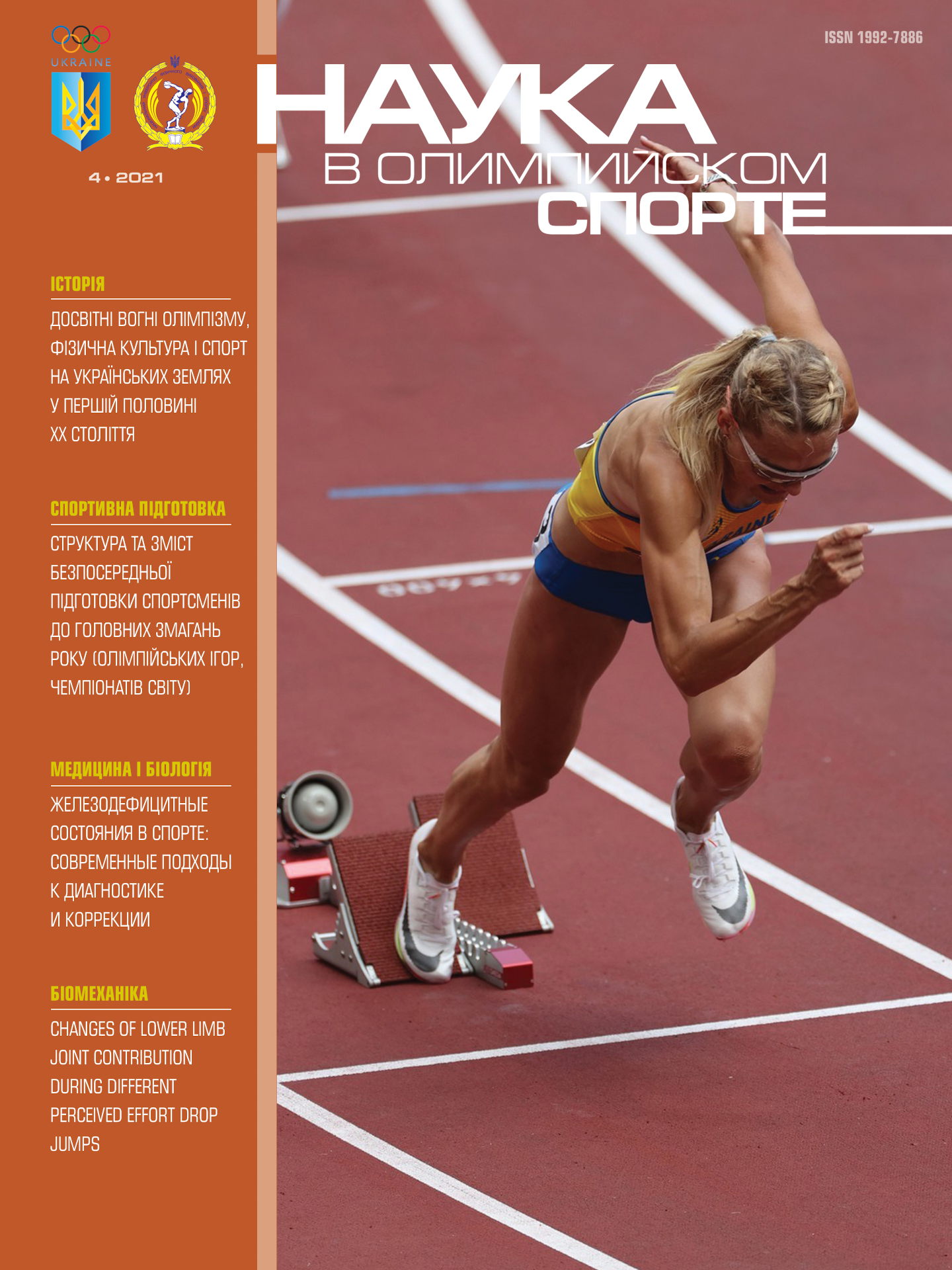Abstract:
The static dynamic stability of the athlete's body as the basis for eff ective motor activity in unexpected situations (based on the materials of hand-to-hand combat) Yurii Litvinenko, Aleksei Nikitenko
Objective. To perform biomechanical analysis and to assess the peculiarities of static dynamic stability of the body in athletes of diff erent qualifi cation who perform motor actions in unexpected and rapidly changing situations (based on the materials of hand-to-hand combat).
Methods. Analysis of specialized scientifi c and methodological literature; biomechanical analysis of human body movements using the system of 3D kinematic analysis "Qualisys" and synchronized force platform "Kistler"; me t hods of mathematical statistics.
Results. The biomechanics of static dynamic stability of the body was studied during execution of motor tasks in unexpected situations of hand-to-hand combat. A series of strikes performed by highly qualifi ed athletes is characterized by a rational distribution of the fi ghter's eff orts in the direction of the strike with the appropriate minimization of lateral movements and vertical displacements of the body center of gravity. The motor actions are accompanied by the rapid stabilization of the body between the phases of strike movements and, especially, in the fi nal stage, that allows the fi ghter to promptly make subsequent decisions and translate them into the required motor actions, which are appropriate to the changing conditions. The data of measurements indicated a high level of static dynamic stability of the body. Achievement of model values of motor actions of the fi ghters is associated with the development and the use of special local programs for the development and improvement of the "motor fi eld" as a basis for technical preparation and technical preparedness of athletes.
Conclusion. Maintenance of static dynamic stability when executing motor actions in unexpected and constantly changing situations is associated with the use of special training programs focused on expanding and deepening the motor memory and the “motor fi eld” as the most important components of the athletes' technical preparedness.
Objective. To perform biomechanical analysis and to assess the peculiarities of static dynamic stability of the body in athletes of diff erent qualifi cation who perform motor actions in unexpected and rapidly changing situations (based on the materials of hand-to-hand combat).
Methods. Analysis of specialized scientifi c and methodological literature; biomechanical analysis of human body movements using the system of 3D kinematic analysis "Qualisys" and synchronized force platform "Kistler"; me t hods of mathematical statistics.
Results. The biomechanics of static dynamic stability of the body was studied during execution of motor tasks in unexpected situations of hand-to-hand combat. A series of strikes performed by highly qualifi ed athletes is characterized by a rational distribution of the fi ghter's eff orts in the direction of the strike with the appropriate minimization of lateral movements and vertical displacements of the body center of gravity. The motor actions are accompanied by the rapid stabilization of the body between the phases of strike movements and, especially, in the fi nal stage, that allows the fi ghter to promptly make subsequent decisions and translate them into the required motor actions, which are appropriate to the changing conditions. The data of measurements indicated a high level of static dynamic stability of the body. Achievement of model values of motor actions of the fi ghters is associated with the development and the use of special local programs for the development and improvement of the "motor fi eld" as a basis for technical preparation and technical preparedness of athletes.
Conclusion. Maintenance of static dynamic stability when executing motor actions in unexpected and constantly changing situations is associated with the use of special training programs focused on expanding and deepening the motor memory and the “motor fi eld” as the most important components of the athletes' technical preparedness.
Аннотация:
Цель. Проведены биомеханические анализ и оценка особенностей статодинамической устойчивости тела спортсменов разной квалификации, которые выполняют двигательные действия в неожиданных и быстроменяющихся ситуациях (на материале рукопашного боя).
Методы. Анализ специальной научно-методической литературы; биомеханический анализ движений тела человека на базе системы 3D регистрации кинематических характеристик «Qualisys» и синхронизированной с ней тензометрической платформы «Kistler»; методы математической статистики.
Результаты. Изучены биомеханизмы статодинамической устойчивости тела при решении двигательных задач в неожиданных ситуациях рукопашного боя. Для спортсменов высокой квалификации при проведении серии ударов характерным является рациональное распределение усилий исполнителя в направлении удара с допустимой минимизацией боковых отклонений и вертикальных колебаний общего центра тяжести тела. Двигательные действия сопровождаются быстрой стабилизацией устойчивости тела между фазами ударных движений и, особенно, в завершающей стадии, что позволяет исполнителю оперативно принимать последующие решения и воплощать их в требуемые двигательные действия, которые соответствуют меняющимся условиям. Зарегистрированные показатели характеризуют высокий уровень статодинамической устойчивости тела. Достижение модельных значений двигательных действий исполнителей связано с разработкой и использованием специальных локальных программ средств развития и совершенствования «моторного поля» как основы технической подготовки и технической подготовленности спортсменов.
Заключение. Обеспечение статодинамической устойчивости при выполнении двигательных действий в неожиданных и постоянно изменяющихся ситуациях связано с использованием специальных тренировочных программ, направленных на расширение и углубление двигательной памяти и «моторного поля» как важнейших составляющих технической подготовленности спортсменов.













